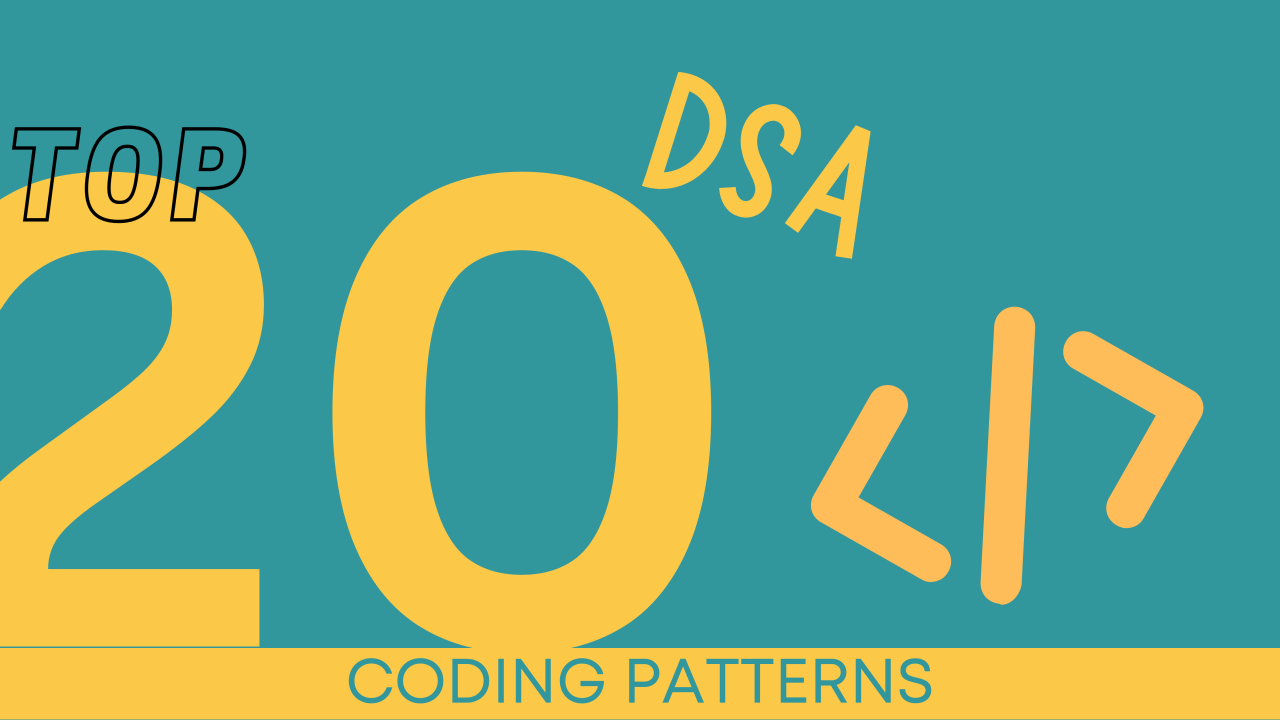
20 Coding Patterns to Master a DSA (Data Structures and Algorithms) Interview
Whether you're a seasoned professional or an aspiring tech enthusiast, a good understanding of DSA (Data Structures and Algorithms) is crucial in acing coding interviews. These are the building blocks of effective problem-solving in the programming world. By mastering certain coding patterns, you can improve your efficiency and handle a wider array of problems during your DSA interviews. Here are 20 coding patterns to ensure your success.
1. Two Pointer Technique: This technique is commonly applied on sorted arrays or linked lists to find pairs or reverse elements. It is an ideal strategy when managing elements with pair relationships.
2. Sliding Window: This pattern is used to track a subset of data within a larger dataset. It's particularly useful in array or string problems when you need to maintain a 'window' of elements satisfying a certain condition.
3. Fast & Slow Pointer: Used in linked list or array problems, this pattern is ideal for detecting cycles or finding a midpoint.
4. Merge Intervals: Use this pattern to deal with overlapping intervals, helping to create a more organized and efficient structure.
5. Cyclic Sort: Employed when you need to sort numbers within a defined range, it provides a neat way to ensure ordered data.
6. In-place Reversal of a Linked List: If you need to reverse a linked list in-place, this is the pattern to use.
7. Tree Breadth First Search: Perfect for traversing a tree level-by-level, providing a comprehensive overview of all nodes.
8. Tree Depth First Search: This pattern allows you to traverse a tree or graph using depth as the main factor.
9. Two Heaps: Ideal when dealing with situations that require access to both the smallest and largest elements simultaneously.
10. Subset Pattern (Backtracking): Useful in solving problems related to permutations and combinations.
11. Modified Binary Search: An adaptation of the binary search for situations where a standard binary search doesn't apply.
领英推荐
12. Top 'K' Elements: This pattern is beneficial for problems that require identifying the top or bottom 'k' elements in a set.
13. K-way Merge: Employ this pattern to merge K sorted lists or arrays efficiently.
14. 0/1 Knapsack (Dynamic Programming): This dynamic programming pattern is often used for optimization problems.
15. Topological Sort (Graph): Useful in finding a linear ordering of vertices in a directed acyclic graph (DAG).
16. Floyd's Cycle Detection Algorithm: Ideal for finding cycles in data structures such as linked lists or arrays.
17. Kadane’s Algorithm (Dynamic Programming): It's an optimal solution for the maximum subarray problem.
18. Longest Common Subsequence/ Substring (Dynamic Programming): This pattern is handy when finding the longest common subsequence or substring in two strings or arrays.
19. Union Find (Disjoint Set): A data structure used to maintain disjointed sets and is useful for network connectivity problems.
20. Trie (Prefix Tree): Ideal for efficient retrieval of keys in a dataset of strings. It's commonly used for features like autocomplete or spell check.
Mastering these coding patterns can significantly enhance your problem-solving skills, making you stand out in any DSA interview. Remember, practice is key! So, keep coding, keep learning, and unlock your potential.
Full Stack Developer | Full-time masters student-AI | Ex-Ajio.com
3 周Would be better if you can also provide list of questions.
2nd- Year BTech CSE Student | Aspiring Software Developer I Passionate about AI , Web Development , Blockchain & Problem Solving
1 个月Ankit Malik sir , are there any more patterns for solving DSA questions ?
Frontend Developer || Reactjs || C++ || Java || Intermediate in DSA ||700+ @Leetcode?||2?@Codechef|| @Codeforces || Expert at CodingNinjas(maxRating - 4351)
1 年thankyou so much sir ji, for sharing this helpful content.